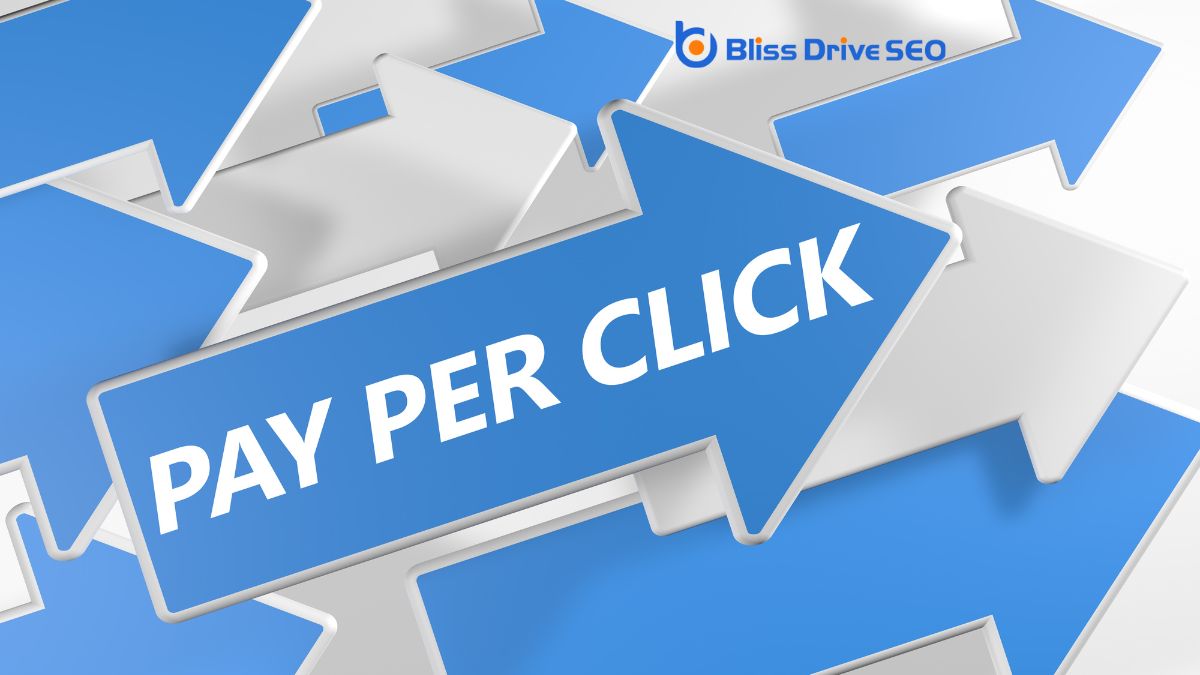Digital Marketing Services
Learn More About Us

PPC, or Pay-Per-Click, is a simple online ad model where you pay every time someone clicks your ad, helping you manage budgets effectively. You choose keywordsWords or phrases that users type into search engines to find information. that match what potential customers might search for. Your ads compete in auctions, where winning ones appear on search results, generating instant traffic. PPC's detailed analyticsThe systematic computational analysis of data or statistics to gain insights and support decision-ma... helps you tweak and improve your campaigns. With the right strategy, you'll boost your online presence and engage more prospects. To learn about types of PPC campaigns, setting one up, and optimizing them, keep going!

While diving into the world of PPC (Pay-Per-Click)An online advertising model where advertisers pay a fee each time their ad is clicked. advertising, it's vital to grasp the basics to set a strong foundation.
You'll find that PPC is an online advertising model where you pay a fee each time your ad is clicked. It's a way to buy visits to your site rather than earning them organically.
Start by understanding that keywords are important. They connect your ads with users' search queries.
Crafting compelling ad copyThe text or content of an advertisement. is another significant step; it should be engaging and relevant to your audience.
Don't overlook setting a budget to control your spending and maximize returns.
Analyzing performance metricsKey indicators used to measure the effectiveness of affiliate marketing efforts, such as clicks, con... will help you refine your approach.
How exactly does PPC advertising function in the digital age? At its core, PPC, or pay-per-click, is a model where you pay each time someone clicks on your ad.
It all starts with you choosing relevant keywords that potential customers might use in search engines. You then create ads targeting these keywords and set a budget for how much you're willing to spend per click.
When users search for those keywords, your ad enters an auction against others. The search engine evaluates bids and relevance to decide which ads to display.
If yours is chosen and clicked, you pay the bid amount. This means you're in control, paying only for actual interactions.
With PPC, you manage your budget while driving targeted traffic to your website.
PPC advertising offers a range of benefits that can considerably boost your business's online presence. By using PPC, you can target specific audiences and guarantee your ads reach the right people at the right time.
Here are three key benefits:
Now that you've seen how PPC can benefit your business, it's time to explore the different types of PPC campaigns available to you.
Search ads are the most common, appearing at the top of search engine results when users enter relevant keywords.
Display adsVisual-based ads that appear on websites, apps, or social media. show up on various websites, using images and text to grab attention.
Social media adsPaid advertisements that appear on social media platforms. target specific audiences on platforms like FacebookA social networking site where users can post comments, share photographs, and links to news or othe... and InstagramA photo and video-sharing social networking service owned by Facebook., ideal for brand awarenessThe extent to which consumers are familiar with the qualities or image of a particular brand. and engagementThe interactions that users have with a brand’s content on social media..
Additionally, shopping ads display product listings directly in search results, which is perfect for e-commerce businesses.
Video adsAdvertisements that play video content, often on platforms like YouTube or social media. run on platforms like YouTube, engaging viewers with dynamic contentEmail content that changes based on the recipient's preferences or behavior..
Each campaignA set of ad groups sharing a budget, targeting options, and other settings. type serves a unique purpose, so consider your business goals and audience when choosing the best fit for your needs.
Starting your first PPC campaign can be an exciting step forward in digital marketing, and it starts with understanding the essential components.
First, choose a reliable platform like Google Ads or Bing Ads. These platforms offerThe specific product or service being promoted by affiliates. robust tools to help you succeed.
Next, create a well-defined budget. Decide how much you're willing to spend and stick to it. Overspending can happen quickly if you're not careful.
Finally, design compelling ad copy that grabs attention and encourages clicks. Your message should be clear and concise, appealing directly to your target audience.
Here's a simple checklist to get you started:
While diving into your PPC campaign, choosing the right keywords is essential for success. Start by brainstorming terms your potential customers might use to find your products or services. Use keyword research tools like Google Keyword Planner to explore variations and discover search volumes.
Pay attention to long-tail keywordsLonger, more specific keyword phrases that are less competitive and often more targeted., which are more specific and often less competitive. This approach can attract targeted traffic and improve your ad performance.
Consider your competitors, too. Analyze their keyword strategies and identify gaps you can capitalize on. Try to balance between highly searched terms and those with lower competition.
Keep refining your list by monitoring performance and making adjustments based on what's working. Remember, choosing the right keywords is a dynamic process and vital for your PPC success.
When crafting PPC ad copy, you want to focus on creating engaging headlines that grab attention immediately.
A strong call-to-action is essential, guiding potential customers on the next steps to take.
Make sure your message is clear and compelling to drive clicks and conversions.
How can you make your PPC ad stand out in a sea of competition? Crafting an enchanting headline is essential. Your headline is the first impressionWhen an ad is displayed on a user’s screen. users get, and it should grab attention instantly.
Here's how you can create effective headlines:
Creating a strong call-to-action (CTA) in your PPC ad copy is essential because it directs potential customers on what to do next and helps you achieve your marketing goals. A compelling CTA can increase click-through rates and conversions. Use action-oriented words like "buy," "discover," or "download" to motivate users. Clarity is key—ensure your CTA tells the audience exactly what to expect. Here's a table to guide you:
| CTA Phrase | Purpose | Example Usage |
|---|---|---|
| "Buy Now" | Immediate purchase | E-commerce stores |
| "Learn More" | Information seeking | Service-based websites |
| "Get Started" | Begin a process | Subscription servicesOffering products or services on a recurring basis, such as monthly or annually. |
Tailor your CTA to match your audience's intent and the ad's objective. Don't underestimate the CTA—it's the bridge between a viewer and a customer.
To truly succeed in your PPC campaigns, understanding how to measure and analyze performance is essential.
You'll need to focus on the right metrics to determine effectiveness and make informed decisions. Start by:

To optimize your PPC strategy, start by focusing on keyword researchThe process of finding and analyzing search terms that people enter into search engines. to guarantee you're targeting the right audience.
Next, craft compelling ad copy that grabs attention and clearly communicates your offer.
Finally, enhance your landing pages to provide a seamless user experience and increase conversionThe completion of a desired action by a referred user, such as making a purchase or filling out a fo... rates.
Releasing the potential of your PPC strategy starts with thorough keyword research.
It's the backbone of your advertising efforts, helping you target the right audience and maximize ad spendThe total amount of money spent on advertising campaigns.. By finding the right keywords, you guarantee your ads show up when potential customers are searching for products or services like yours.
Here's how to optimize your keyword research:
Effective keyword research drives successful PPC campaigns.
Crafting compelling ad copy is essential for optimizing your PPC strategy, as it directly influences click-through rates and conversions.
Start by understanding your audience's needs and desires. Use clear, concise language that speaks directly to them. Highlight benefits, not just features, and create a sense of urgency with phrases like "limited time offer."
Incorporate strong calls to action, encouraging users to take the next step. Make sure your ad copy aligns with your keywords and delivers on its promise. Test different variations to see what resonates best.
Don't forget to include your unique selling proposition to stand out from competitors. Keep mobile users in mind by ensuring your message is clear and compelling, even on smaller screens.
While crafting compelling ad copy grabs attention, your PPC strategy truly shines when it guides users to an optimized landing pageThe web page a user is directed to after clicking on an affiliate link, optimized for conversions. that converts interest into action.
A well-optimized landing page guarantees users find what they're looking for quickly and effortlessly, enhancing your conversion rates. Here are three essential tips to optimize your landing page:
By now, you should have a solid grasp of PPC fundamentals and how to leverage them for your business. Remember, it's all about choosing the right keywords, crafting compelling ad copy, and continuously measuring performance. Don't be afraid to tweak your strategy and experiment with different types of campaigns. With practice and dedication, you'll optimize your PPC efforts and drive impressive results. Immerse yourself, stay curious, and watch your business grow through effective PPC advertising.
